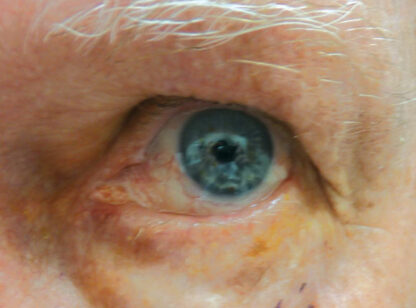A 2014 study released by the Centers for Disease Control and Prevention (CDC) showed that in 2010 there were an estimated 988,000 visits to doctors’ offices, outpatient clinics, and emergency departments for keratitis (inflammation of the cornea) and other contact lens-related eye conditions.
The total cost was estimated to be $175 million and treatment included over 250,000 hours of clinician time spent seeing these patients. The study also estimated the cost of a doctor’s visit for keratitis at $151.00 on average; each emergency room visit costs an average of $587.00, and neither of these estimates includes the cost of medications to treat the eye infections.
In the majority of these cases (76%), an anti-microbial prescription was prescribed, and the single largest risk factor by far was contact lens wear. What is the cause? As the CDC report states:
“Among the estimated 38 million contact lens wearers in the United States, poor storage case hygiene, infrequent storage case replacement, and overnight lens wear are established preventable risk factors for microbial keratitis, contact lens-related inflammation and other eye complications.” 1
If anything, this study underrepresents the incidence of infectious keratitis as it captured few optometric offices, and optometrists provide over 70% of eye care in America. The prescriptions recorded in the study were only those covered by insurance, not those filled by private pay. Lastly, visits for contact lens-related corneal problems do not all involve microbial keratitis. Others may involve erosions, abrasions or foreign bodies.
A large majority of these cases could be easily prevented with proper contact lens care. To prevent complications, patients should follow these recommendations:
- Wash hands with soap and water and dry well before handling lenses.
- Remove contact lenses nightly and before swimming.
- Rub and rinse contacts in disinfecting solution each time removed.
- Replace contact lens cases every month.
- Rub and rinse the contact lens case with contact solution, dry the case and keep it upside down with the caps off daily.
- Do not “top off” solution in the lens case.
- Replace the lens on schedule (do not extend the recommended replacement schedule).
- Avoid sleeping in your contact lens.
- Have backup glasses with a current prescription available.
Remember, eye infections can cause permanent vision loss. When an eye is sore, red, inflamed or irritated, remove the contact lens and see an eye doctor. The sooner treatment is started, the faster the recovery and the better the outcome.
Dr. Evans is the founding owner of Evans Eye Care in Palm Desert and can be reached at (760) 674.8806 or online at www.evanseyecare.com.
Reference: 1) Sarah A. Collier, Michael P. Gronostaj et al, CDC Morbitity and Mortality Weekly Report (MMWR), November 14, 2014 /63(45);1027-1030









































Comments (0)